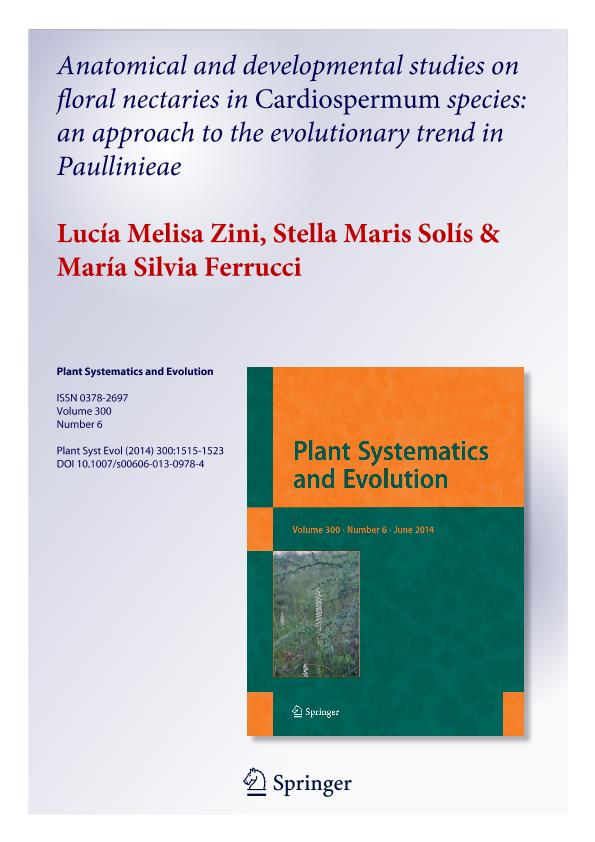Artículo
Anatomical and developmental studies on floral nectaries in species of Cardiospermum: an approach to the evolutionary trend in Paullinieae
Fecha de publicación:
08/01/2014
Editorial:
Springer Wien
Revista:
Plant Systematics and Evolution
ISSN:
0378-2697
e-ISSN:
2199-6881
Idioma:
Inglés
Tipo de recurso:
Artículo publicado
Clasificación temática:
Resumen
Floral nectaries are a widespread trait in the Sapindaceae. However, until now only a few data on nectaries and their evolutionary shifts are available for most taxa. This research focuses on the anatomy and development of floral nectaries in two endemic species, Cardiospermum heringeri and C. integerrimum. The nectary consists of two horn-like lobes, located at the base of the androgynophore. Anatomically, it is characterized by three components: uniseriate epidermis, sub-epidermal secretory tissue and vascular tissue. The epidermis contains many nectarostomata involved in the exudation process. The secretory parenchyma is composed of small thinwalled cells, relatively lightly stained, and idioblasts containing oxalate druses. Vascular tissue supplying the nectary consists exclusively of phloem. From an early stage of development, the nectary lobes in both species are associated with the base of the posterior petals, but each organ originates independently of one another. These results plus additional morphological observations of nectary lobes in some species of Cardiospermum, Serjania, Paullinia and Urvillea were analyzed within the framework of phylogenetic knowledge.
Archivos asociados
Licencia
Identificadores
Colecciones
Articulos(IBONE)
Articulos de INST.DE BOTANICA DEL NORDESTE (I)
Articulos de INST.DE BOTANICA DEL NORDESTE (I)
Citación
Zini, Lucia Melisa; Solís, Stella Maris; Ferrucci, María Silvia; Anatomical and developmental studies on floral nectaries in species of Cardiospermum: an approach to the evolutionary trend in Paullinieae; Springer Wien; Plant Systematics and Evolution; 300; 6; 8-1-2014; 1515-1523
Compartir
Altmétricas




